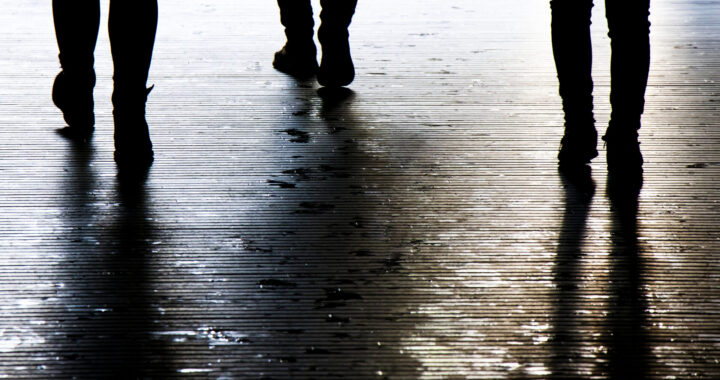Crime in WW2 London
I write a series about a Scotland Yard detective, DCI Frank Merlin battling crime in World War Two London. The facts of wartime crime in London and the country at large are surprising. World War Two was a boom time for British crime. Between 1939 and 1945, reported crime on the Home Front in England and Wales grew by nearly sixty per cent. There were a number of factors specific to the war which contributed to this rise:
- the blackout regulations meant that towns and cities were pitch-dark at night throughout the war. Naturally this made life much easier for criminals.
- rationing and other wartime restrictions created a host of new opportunities for criminals. A vibrant black market came into existence and fraudsters, thieves and forgers were able to make hay.
- German bombing caused chaos in towns and cities which criminals could exploit.
- the police lost many experienced officers to the armed forces and were often overstretched.
Here are some examples of wartime crime:
- LOOTING, ROBBERY AND THEFT
Looting was widespread during the Blitz and after. In the four months to the end of 1940, 4,584 cases of looting were prosecuted in the Old Bailey. Bombed-out Londoners often returned to the ruins of their houses to find them stripped of all surviving furniture and valuables. The culprits might come from all walks of life including even air wardens, firemen and other members of the home defence forces.
- MURDER
The blackout widened opportunities for killers. A young airman called Gordon Cummins, whose activities brought him the soubriquet of the ‘Blackout Ripper’, liked mutilating and murdering young women. The dark unlit streets of London afforded him good cover. Between 1941 and 1942 he killed at least four victims before being caught and hanged. Other London murderers, tried to take advantage of the wreckage of the Blitz to cover up their crimes. One called Harry Dobkins strangled his wife and buried her in the rubble of a bombed-out London chapel hoping that if discovered she would be passed off as just another Blitz victim. Unfortunately for him, a pathologist spotted the real cause of death and he went to the gallows. One wonders how many wartime murderers disposed of bodies in a similar way but got away with it.
- LONDON GANGS
Organised gangs played a major role in wartime crime. The most successful and powerful in London was that led by Cockney mobster Billy Hill. His gang established a dominant position in the black market as well as carrying out many big robberies and burglaries. Gangs too controlled the thriving vice business, although Hill left that to others. The kingpins of wartime vice were five Maltese brothers, the Messinas. By 1944 there were over 3 million men in the home armed forces and over 1.5 million American troops. Sailors, soldiers and airmen would surge into towns on leave looking for a good time. The Messinas were happy to provide it in London. They owned nightclubs, brothels and ran a huge team of prostitutes known as the ‘Piccadilly Commandos’.
- WARTIME SCAMS
Many items were rationed during the war, the major ones being food, petrol and clothing. Rations were administered via a system of ration books and coupons. This system offered opportunity to forgers and thieves. Huge amounts of money could be made. In one case in 1944, a gang stole 14,000 newly issued ration books and sold them on the black market for a total estimated profit of £70,000, approximately £3m in today’s money. Another case featured the forgery of clothing coupons. The going black market rate for a forged coupon was £10, or £400 today. Large numbers of these were sold on the streets of London.
Other scams were operated by crooked officials and professionals. For example, bent doctors would sell military exemption health certificates to men wishing to avoid the call-up.
- AMERICANS
The arrival of thousands of American troops in 1942 had significant implications for the British criminal justice system. From August 1942, legal jurisdiction over all American military personnel was awarded by Act of Parliament to the American military authorities and British police powers were thereby diminished. Problems too were caused by the importation into the country of the fraught race relations prevalent back in the US. White and black American soldiers were often found violently at odds with each other in pubs, clubs or on the street. Black soldiers were treated mostly as second-class citizens by white soldiers, and this attitude fed through to their military legal system, where black personnel were clearly discriminated against. There were more many military prosecutions and convictions of black soldiers and their sentences were notably harsher. In one instance, the evident injustice of the American system led to a public outcry when a black soldier, Leroy Henry, was convicted of rape on flimsy evidence and sentenced to hang. The British press took up the case and over 30,000 people in Bath, where the offence had allegedly taken place, signed a petition seeking Henry’s reprieve. General Eisenhower, US military commander in Britain, investigated and felt bound to overturn the verdict as unsafe. Henry was returned to his unit.
If you’d like to follow Frank Merlin’s wartime adventures in crime-boom London, the books in the series are:
The Embassy Murders (previously titled Princes Gate) set in January 1940
In The Shadows Of The Blitz (previously Stalin’s Gold) set in September 1940
The French Spy (previously Merlin At War) set in June 1941
A Death In Mayfair set in December 1941
Dead In The Water set in August 1942
A sixth Merlin novel will be out next year.
My website is markellisauthor.com and I’m on Twitter @MarkEllis15 and other social media.

